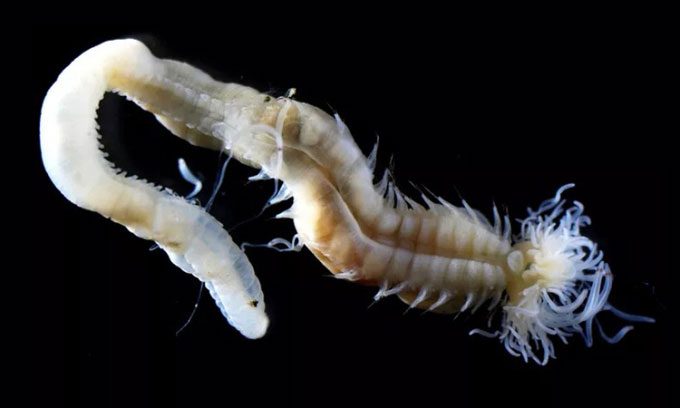Japanese Scientists Discover Three Unique Species of Luminescent Worms
The newly identified species have been named Polycirrus onibi, Polycirrus aoandon, and Polycirrus ikeguchii. They belong to the genus Polycirrus within the class Polychaeta, typically found in the shallow waters of rivers and streams in Japan. Researchers from Nagoya University announced their findings in the journal Royal Society Open Science on March 29.

Polycirrus onibi, one of the three newly discovered polychaete worm species. (Photo: Naoto Jimi).
The bizarre appearance and the ability to glow in the dark (in blue or purple) make them resemble ghostly apparitions at night. The similarity to the stories of Yokai demons in Japanese folklore inspired the researchers to name two out of three of these worm species.
Specifically, “onibi” refers to the fire spirit Onibi, a creature resembling a glowing orb that often hovers over remote mountainous areas to lure unsuspecting travelers astray, while “aoandon” embodies terror, depicted as a female ghost in a white kimono, created from the very fears of those who gather to tell ghost stories under the light of blue lanterns.
“Ikeguchi” is the only name that does not refer to Japanese folklore. Instead, it honors the former director of the Notojima Aquarium, who contributed to the discovery of this worm species.
Polychaete worms are an ancient group of organisms that have existed on Earth for at least 505 million years during the Cambrian period. They have survived five mass extinction events throughout history. Currently, there are over 10,000 described species within this class.
In the next phase, the researchers aim to investigate the luminescent mechanisms of the three new worm species. “Bioluminescence is a fascinating chemical treasure. Understanding the molecular nature of this phenomenon will benefit life sciences and medicine,” emphasized Naoto Jimi, the lead author of the study and an assistant professor of biology at Nagoya University.


















































